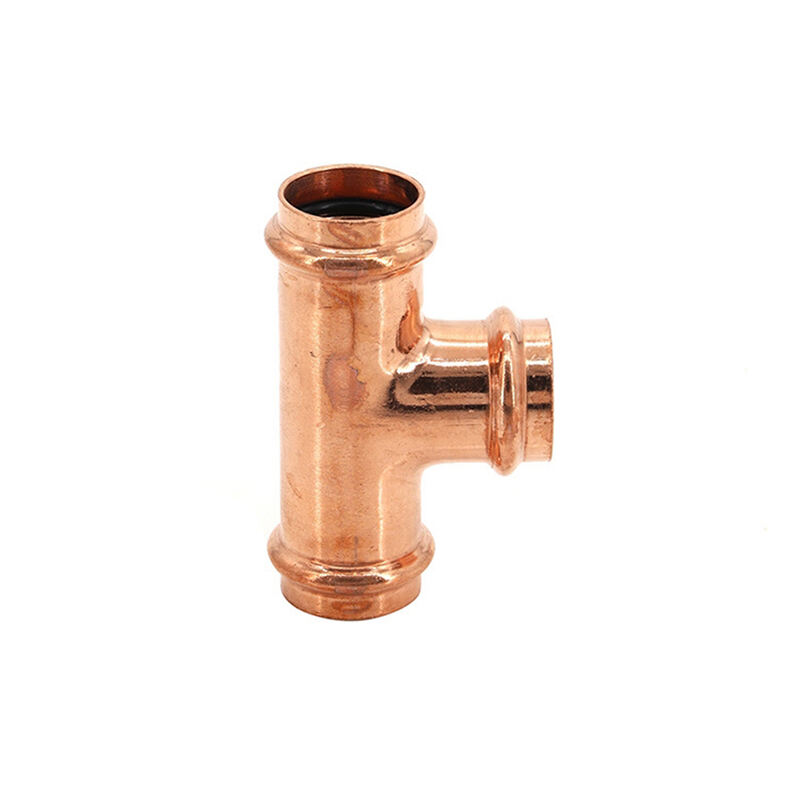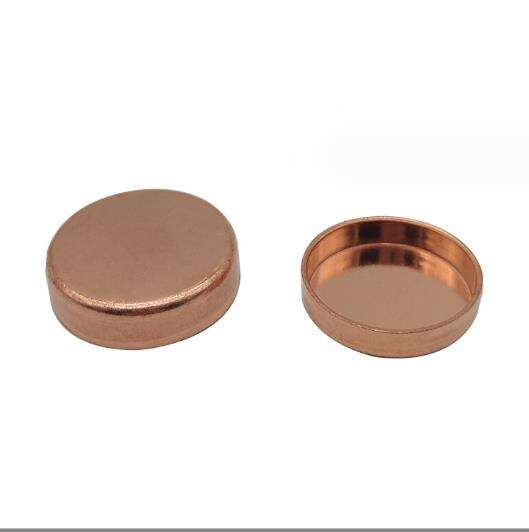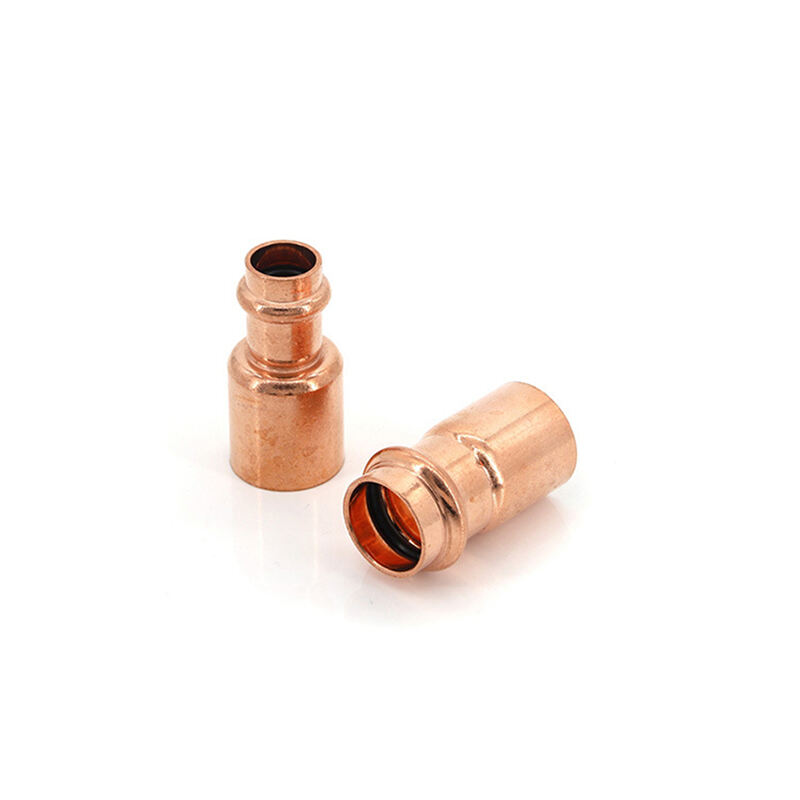Composition and Material Properties
Copper Pipes: Natural Metal Durability
Copper pipes are renowned for their high durability and resistance to corrosion, making them a reliable choice for various plumbing applications. This natural metal can efficiently withstand high temperatures, ensuring longevity in both residential and commercial settings. Moreover, copper's natural antimicrobial properties add an extra layer of protection against bacterial growth in water systems, reducing health risks. These attributes establish copper pipes as a premier choice for maintaining safe and efficient plumbing environments. Emphasizing these qualities, copper pipes ensure stability and reliability, enhancing their reputation as a cornerstone in plumbing infrastructure.
Plastic Pipes: Synthetic Polymer Flexibility
Plastic pipes, such as PVC and PEX, offer exceptional flexibility, simplifying installations in complex plumbing configurations. Their lightweight nature facilitates handling and reduces installation time, making them ideal for projects requiring quick implementations. Additionally, plastic pipes exhibit resistance to numerous chemicals, rendering them a preferred option in diverse environments, from residential to industrial settings. This chemical resilience ensures minimal degradation over time, maintaining long-term effectiveness. PVC and PEX pipes are versatile and practical solutions, adaptable to the evolving needs of modern plumbing industries while upholding high standards of performance.
Role of Brass Fittings in Plumbing Systems
Brass fittings play a pivotal role in plumbing systems, notably when used with copper pipes, providing robust connections due to their inherent strength and corrosion resistance. Their compatibility with both copper and plastic pipes contributes significantly to the versatility of plumbing installations. With the ability to accommodate these diverse materials, brass fittings ensure seamless integration within various plumbing designs, enhancing system reliability. Their role in maintaining the structural integrity and fluid dynamics of plumbing systems highlights the importance of selecting quality fittings to optimize performance across different materials and applications.
Cost Comparison: Initial and Long-Term Expenses
Upfront Costs of Copper vs. Plastic Pipes
When it comes to initial expenses, copper pipes generally entail higher costs compared to plastic pipes. This price difference is due to the material and installation requirements associated with copper. Budget-conscious projects often prefer plastic pipes due to their more affordable upfront costs. However, investing in copper pipes can sometimes be justified by the longer lifespan and lower maintenance expenses they offer. The robust durability and resistance to environmental factors can reduce the need for frequent replacements and repairs, offering a financial advantage over time. Choosing between copper and plastic pipes ultimately depends on balancing immediate budget constraints against potential long-term savings.
Lifespan Impact on Total Investment
The lifespan of piping materials significantly affects the total investment over time. Copper pipes are known for their longevity, often lasting over 50 years with appropriate care. This results in reduced total investment by minimizing replacement costs over the decades. On the contrary, plastic pipes, while cheaper initially, may have varied lifespans depending on usage and maintenance. If plastic pipes require frequent replacements, the cost savings at the outset could be offset by additional expenses over time. Consideration of lifespan versus initial expenditure is crucial for making an informed decision in pipeline investments.
Maintenance and Repair Expenses
Maintenance and repair costs are pivotal considerations when selecting piping materials. Copper pipes offer a distinct advantage with their durability, often resulting in fewer repairs due to their resistance to leaks and environmental damage. This reliability can translate into lower overall maintenance expenses. In contrast, plastic pipes may demand more frequent repairs, particularly if exposed to certain environmental stressors or their operational limits are exceeded. Careful evaluation of potential repair expenses provides a clearer perspective on the long-term viability of copper versus plastic pipes, aiding in more strategic and economically sound decisions regarding material choice.
Durability and Performance Factors
Corrosion Resistance in Copper Pipes
Copper pipes exhibit excellent corrosion resistance, making them a popular choice for many plumbing systems. When installed correctly, they can withstand various water qualities and conditions, minimizing the risk of corrosion. Statistical data show that properly maintained copper pipes can last several decades without significant degradation. This longevity makes copper an attractive option for those seeking durable piping solutions. The investment in copper can be offset by its durability, as less frequent replacements and repairs are required compared to other materials.
Plastic Pipe Vulnerabilities to Temperature
Plastic pipes, while versatile and cost-effective, present certain vulnerabilities when exposed to extreme temperatures. At low temperatures, plastic can become brittle, increasing the risk of cracks and breaks. Conversely, prolonged exposure to high heat can cause plastic pipes to deform. Thus, understanding the thermal performance of plastic is crucial. It's important to evaluate local climate conditions or the requirements of hot water applications when choosing the appropriate material. Opting for the right piping can ensure efficiency and longevity.
Impact of Water Chemistry on Both Materials
Water chemistry plays a significant role in the lifespan of both copper and plastic pipes. Acidic water, in particular, can accelerate the corrosion of copper, leading to potential leaks and deterioration over time. Plastic pipes, while not susceptible to corrosion, can also be affected by certain chemicals present in water. Regular water quality testing is essential for identifying any issues that might impact the longevity of piping systems. Taking corrective actions based on these tests can help prolong the life and performance of your plumbing, regardless of the material choice.
Installation Processes and Connector Types
Soldering Copper Pipes with Brass Plumbing Fittings
Soldering is a common and effective method for joining copper pipes and brass fittings, requiring specific skills and tools for proper execution. This method involves heating the junction of the copper pipe and fitting, then applying solder, which melts and flows into the joint through capillary action. A proper soldering job ensures leak-proof connections, which are critical for the longevity and reliability of copper plumbing systems. Mastery in soldering not only helps prevent leaks but also enhances the overall durability of the plumbing infrastructure, making it unsurpassed in areas where robust and lasting connections are essential.
Snap-Together Plastic Pipe Systems
Plastic pipes often utilize snap-together systems, providing a quick and effortless method of installation that significantly reduces labor costs. These systems are designed for ease, making them particularly advantageous for DIY projects as they do not require specialized tools or technical skills. The ease of installation not only saves time but also minimizes potential errors, ensuring a secure and reliable plumbing network. This feature is especially popular in residential settings and small projects where efficiency and ease are paramount.
Copper Pipe Connectors vs Plastic Adhesive Methods
Understanding the differences between copper pipe connectors and plastic adhesive methods is crucial for determining installation ease and long-term performance. Copper pipe connectors, which often utilize mechanical methods, provide robust connections with resilience to physical stress and environmental changes. On the other hand, plastic adhesive methods require meticulous application to ensure effectiveness, as improper use can lead to failure in the joints over time. Both systems have their merits, but your choice should align with the specific demands of your plumbing project and the environment in which it operates.
Environmental and Safety Considerations
Recyclability of Copper vs Plastic Materials
Copper has long been celebrated for its exceptional recyclability. Many facilities offer copper recycling services, significantly offsetting initial costs for users and emphasizing its sustainable charm. Unlike plastic materials that are often downcycled, copper retains its quality and performance over multiple recycling processes. In contrast, plastic materials, while theoretically recyclable, typically face challenges such as degradation during recycling. This degradation results in the production of lower-grade products, limiting the long-term environmental benefits compared to copper. Thus, choosing copper over plastic in plumbing and fittings can contribute to more sustainable practices and energy conservation.
Fire Safety and Thermal Resistance
Copper pipes are renowned for their superior fire resistance, making them a preferred choice for high-temperature environments. Unlike plastic, copper does not combust and contributes positively to fire safety due to its high melting point and non-combustible nature. This attribute ensures compliance with local building codes and enhances the safety of installations in residential and commercial properties. Many building regulations favor copper pipe systems in areas prone to high temperatures or fire risks, emphasizing their reliability and robust performance. Choosing copper for plumbing applications therefore aligns with stringent safety standards and can mitigate risks associated with thermal damage.
Microplastic Leaching Concerns in Plastic Pipes
Recent studies have highlighted significant concerns regarding microplastic leaching from plastic pipes. This phenomenon poses potential health implications, particularly in drinking water systems. Microplastic particles are small, often invisible to the naked eye, but can infiltrate water supplies through plastic degradation. Being informed about these environmental impacts is crucial for making sustainable and health-conscious choices in plumbing materials. Opting for copper as a safer alternative is gaining traction due to its established safety record and absence of plastic-related risks. This choice significantly reduces the probability of microplastic contamination and contributes to healthier water systems.





